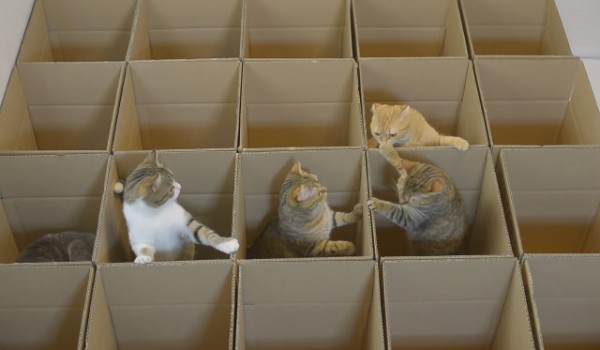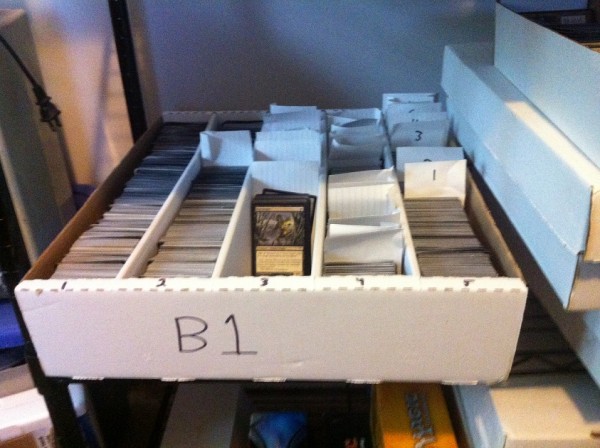Are you a Quiet Speculation member?
If not, now is a perfect time to join up! Our powerful tools, breaking-news analysis, and exclusive Discord channel will make sure you stay up to date and ahead of the curve.
Welcome back, readers and fellow speculators!
Today's article will focus on inventory management, and in a future article I'll discuss inventory control. I'll explain what they are and how they relate to Magic finance. So let's get to it!
Inventory Management
I'm a mechanical engineer by trade, which means I often get to spend my time designing new things. However a good portion of my time is spent keeping my factory running smoothly. As you might guess, this aspect of the job isn't nearly as enjoyable, but it's absolutely critical to the company.
I am in charge of creating and maintaining Bills of Materials (BOM). At the manufacturing plant where I work we get large customer orders to deliver over a period of time (a typical order is something like make X widgets each week for Y weeks). The BOMs tell our purchasing team what they need to buy and our Enterprise Resource Planning (ERP) software breaks down the known customer orders into groups. This lets the purchasing team order the necessary parts and have them arrive on time.
As I explained last week, a cash flow analysis ensures we don't tie up too much on inventory that won't be used for several months. Our purchasing department also has additional challenges regarding the pricing of components due to batch size (the quantity manufactured by our sub-suppliers).
Now, what on earth does that have to do with Magic: the Gathering finance? Great question, anonymous online reader.
Tracking Magic Inventory
If you sell cards on TCG Player or another store website, you likely get orders for multiple cards. When you're a two- to four-person shop with a small inventory, it may not be absolutely necessary for each individual to know exactly where every card is located, but it is critical that every person know the general location.
Every order will take some amount of time to "pick" (or locate each individual card and gather them together). Good inventory management will not only catalog all your cards, but also where each is located, to minimize the pick time. In the end this helps you ship out more packages per day, leads to happier customers, and in some cases allows you to get paid faster (on sites like Pucatrade that only apply credit after the transaction is completed).
Another challenge that can be faced on the MTG sales side is when you are trying to maximize visibility in the marketplace with a presence on multiple selling platforms. Strong inventory management will keep your inventory correct to prevent overselling and upsetting customers.
Ideally you'd want each venue to pull from a common database, thus eliminating any double orders and the need to maintain multiple databases. Unfortunately at this time, most Magic selling platforms have their own proprietary systems which make this impossible. This just makes a good internal inventory management system all the more important.
Another aspect of inventory management is the actual physical location of one's inventory. Obviously you want to keep your inventory readily available (i.e. don't rent out a storage locker across town to store all your cards), but we can go a bit deeper than that.
If you keep your inventory in a backroom with a lot of shelves you need to choose where and how to store everything. You could just put everything on the shelves and be done with it, or you could take a smarter approach to organization. If a lot of your sales are for Standard cards, for example, then it makes the most sense to keep those cards closest to the door, to eliminate extra time spent wandering about and picking. You'd also do well to take a page from grocery store stockers and place the items that move most at your picker's eye level.
Stock takes up space. We're lucky that individual Magic cards are small enough to store large quantities in a relatively small space (unlike, say, bulldozers) which means we don't need large warehouses to store inventory. On the flip side, because they are so small they're a lot easier to lose track of. It can be very time consuming to find one card in a giant box (or even worse, a whole backroom) of cards.
Hunting down individual cards you know you have but can't locate is a huge waste of time. This is time you don't have to sell, organize, package, etc. Remember the old adage that "time is money"--if you are paying an employee to pick cards for you then every minute they spend picking costs you money.
For example, let's say you pay someone minimum wage to help fill online orders. In most of the US, minimum wage is $7.25 an hour, which equates to $0.12 per minute. When your orders are for $10- to $20-cards then a three-minute pick time might not seem too bad. But if your order includes 30x random cards that sold for $0.25 each, then any time spent picking above 2.08 minutes per card is actually losing you money. Let that sink in for a minute.
Wasted time compounds quickly. So what can we do to eliminate this waste? The easiest and smartest thing to do is organize your inventory in an efficient manner.
Designing a System
My favorite LGS has a giant wall of cardboard hotels like the one shown below (minus the kittens).
In each section they have a longbox with the name of the set written on it. The downside to this strategy is that if you have a lot of one set it takes up multiple boxes and your ability to find a card still requires you to search through each box. This organizational strategy is rudimentary and sub-optimal. It still allows for a lot of wasted time.
The key to a good organizational strategy is balancing the level of detail and the amount of time required to maintain it. The other extreme would be to put every card in a sleeve, assign said sleeve a number, and then organize the sleeves in some fashion (likely numerically) so that you can find the exact card you're looking for. The problem with this method is it's hugely labor intensive and every time you sell a card your numbering will get thrown off.
At work we assign a bin location to our components, which is a numerical "smart number" (a number in which the digits are not randomly assigned, but instead each digit represents a characteristic that defines either the component or its location). For example, Widget A's smart number might be 3-2-54, which would stand for shelf 3, row 2, item 54. This type of numbering aids our pickers tremendously and virtually eliminates time wasted searching for something.
Since Magic cards are small and typically stacked together to ease space requirements, we may not want to organize to the exact card level. However, if you happen to use large 5000-count boxes for storage, you could do something like this:
While I don't have rows upon rows of inventory myself (or really more than two shelves), this would likely look something like the image below (focus on row five as I haven't had a chance to do the first four yet).
In this case it would be smart to break the Row Subsection (the last digit) into small, easily searchable quantities (maybe 50 cards or so). This would mean a picker only has to search through 50 cards for any given card (assuming your inventory remains properly managed), which can be done in a matter of seconds.
The next question you might have is, where would this smart number appear? The answer is in whatever inventory management software you use. (I suggest looking here for some free options, though they will likely be limited in power.)
Set up a field for the smart number, and make sure it appears on the "pick list" you print out to hand to your picker. Note that while most inventory management software has a unique ID number for each item, you'll have to use a different field for the smart number, since multiple cards may share the same one. The order sheet should then have everything your pickers need to find the cards and verify the order--you may also want to include it in the packaging for your customer.
~
Hopefully this article will help you manage your inventory better. Setting up a proper inventory management system, along with the software to track it, is certainly a huge endeavor. But while it may take time and include a lot of headaches, it will prove its value over the long run.








